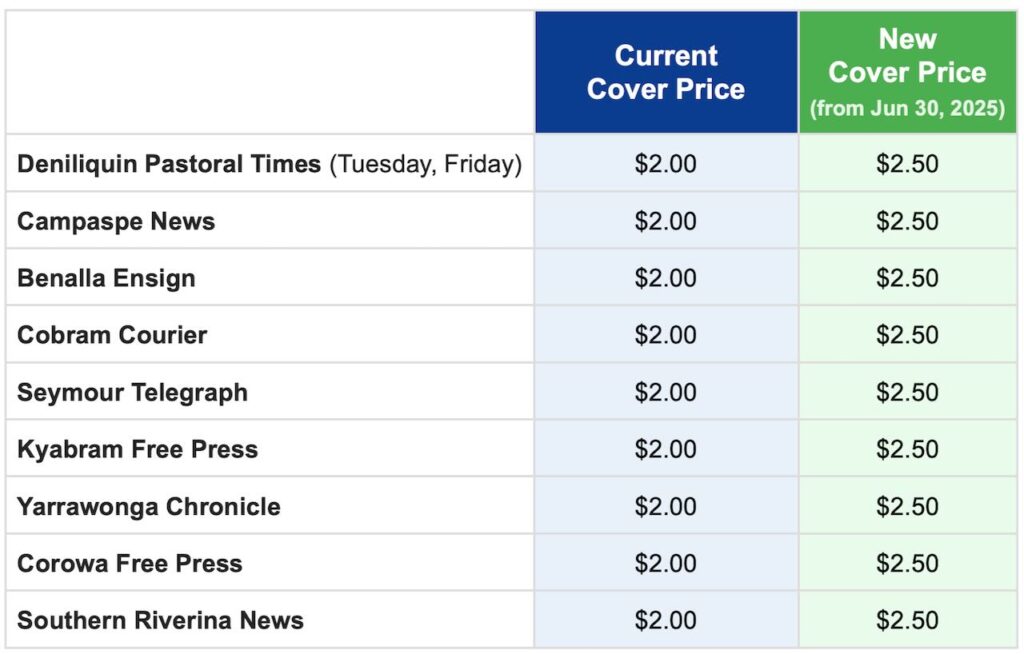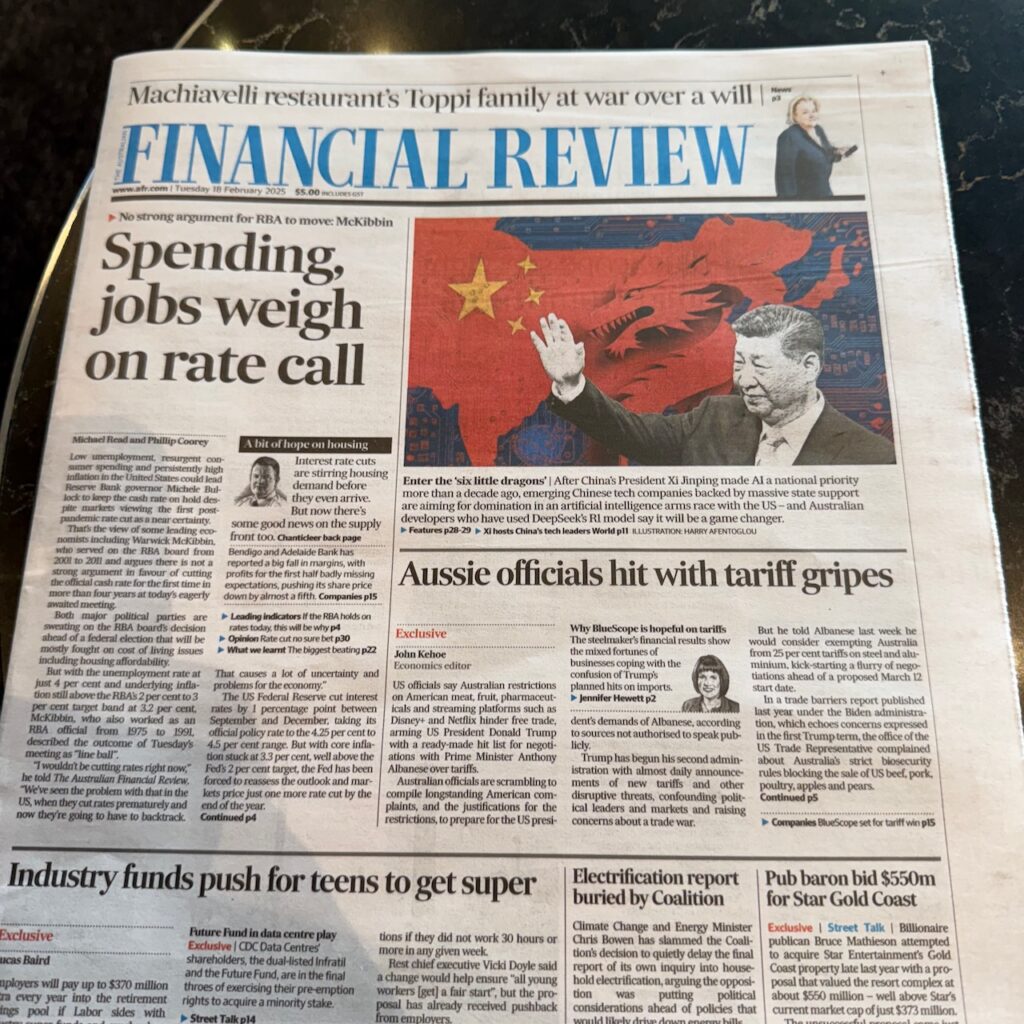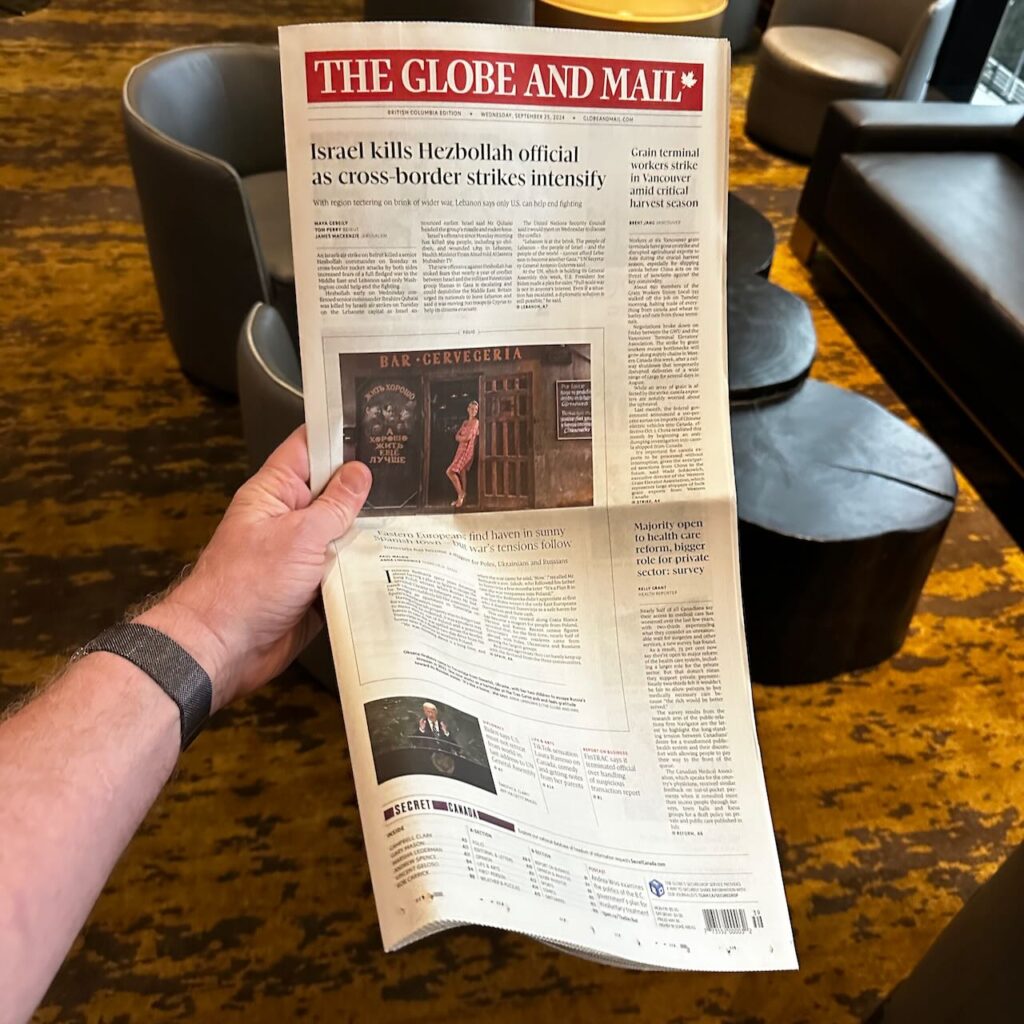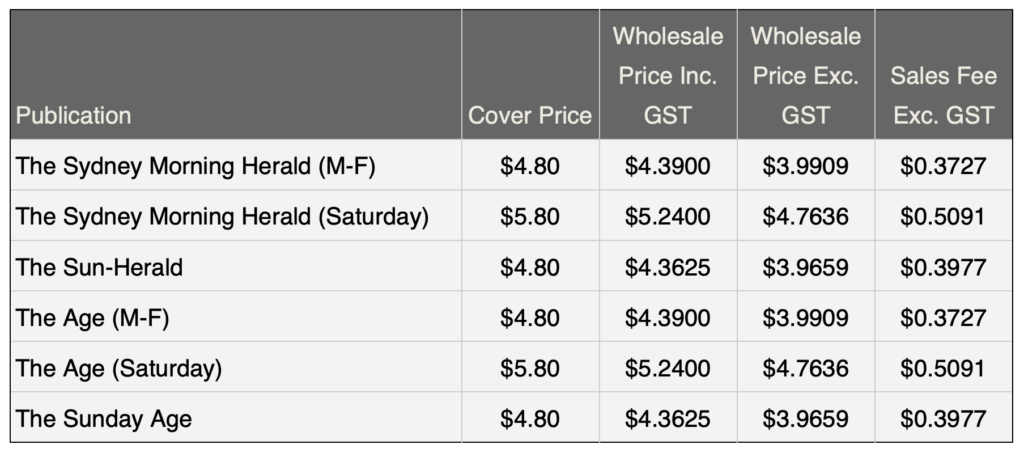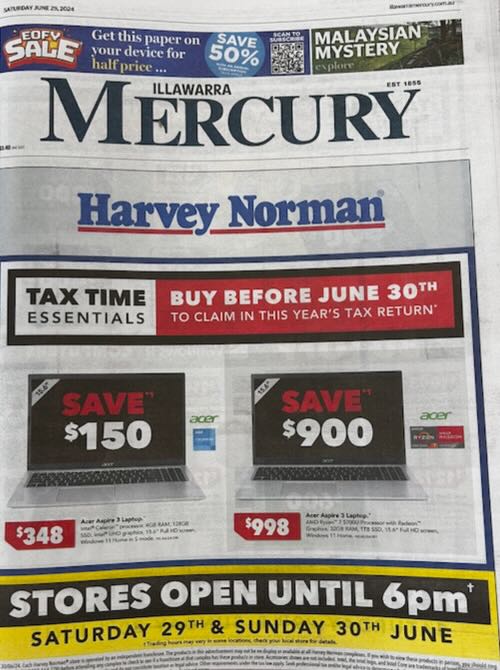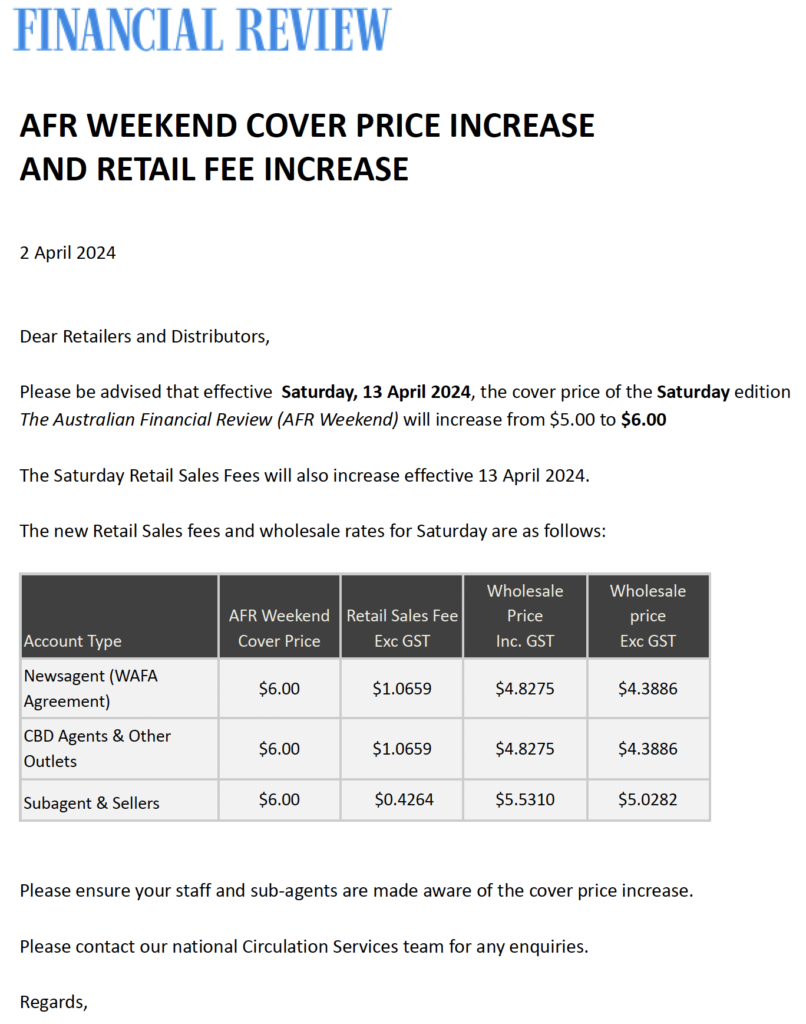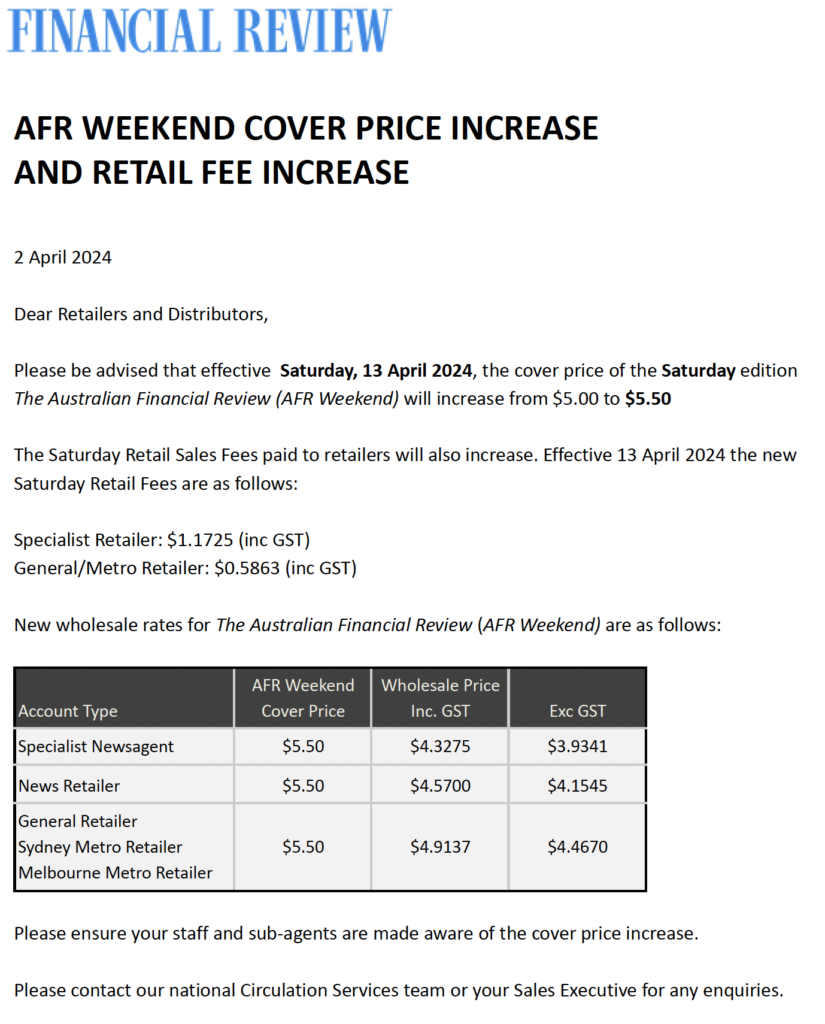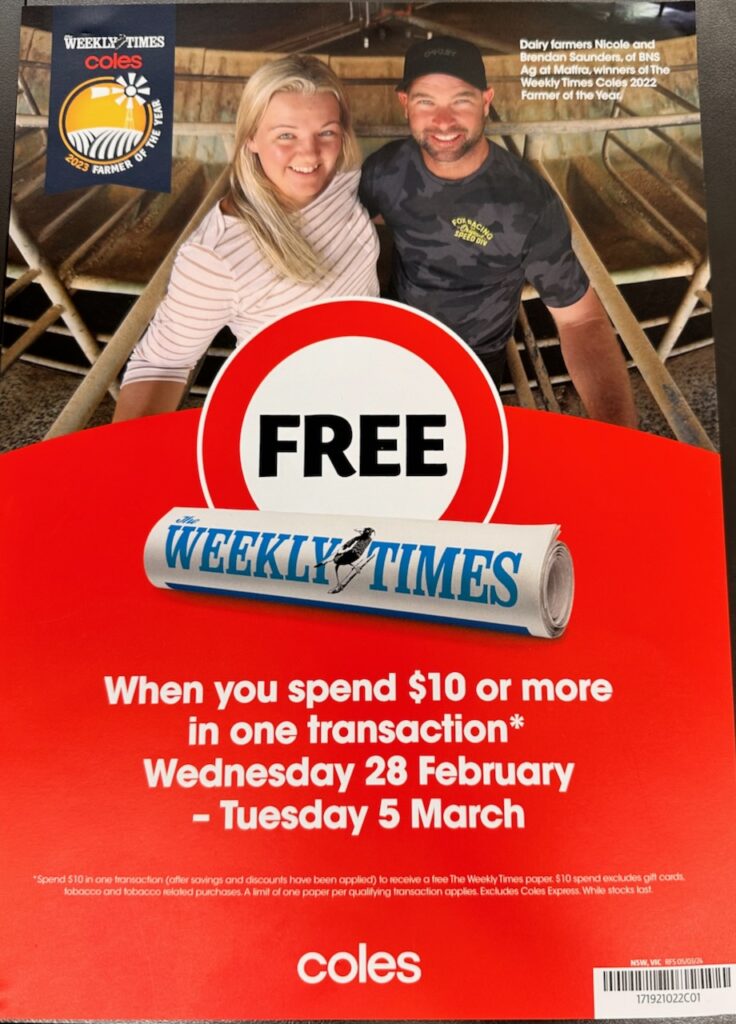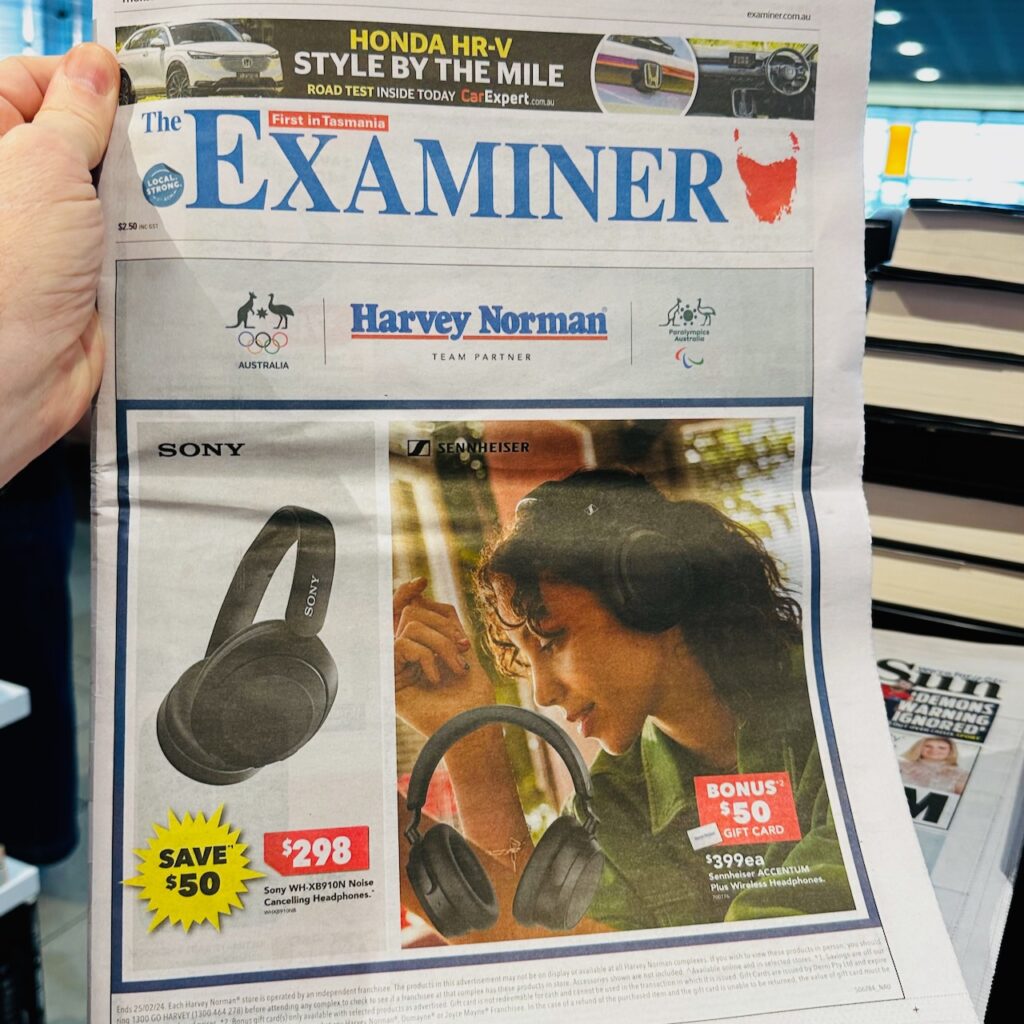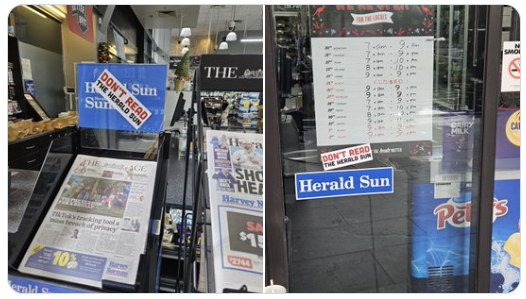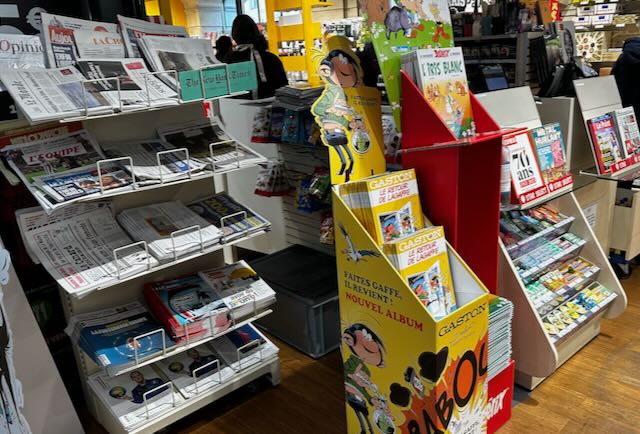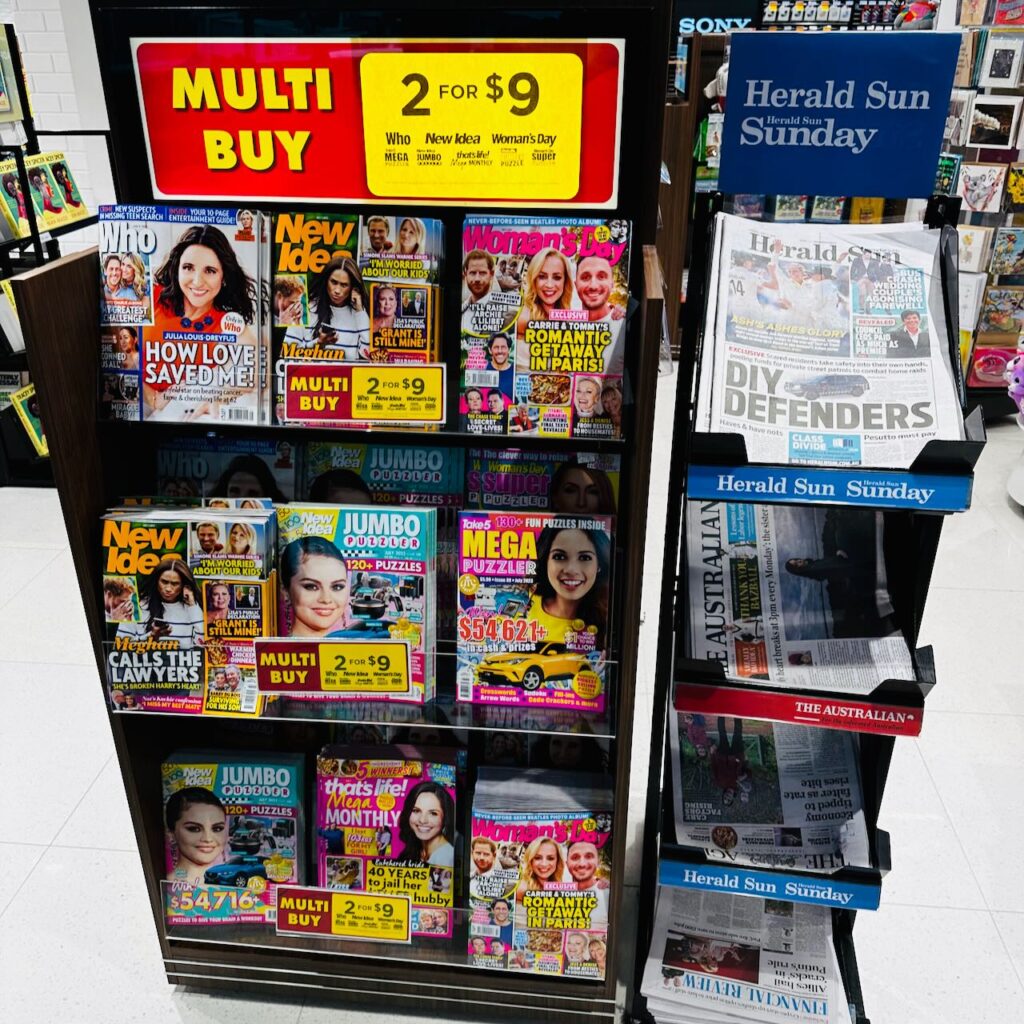The data I’ve seen from a range of Australian newsagencies suggests the answer is an unequivocal yes: the pace of decline of over the counter newspaper sales increased in 2025. While the dataset is small, it points to an accelerated decline in 2025, a trend that should be an urgent wake-up call for every newsagent. And, it’s not as if this is the first such wake-up call for Aussie newsagents.
Looking at data from several capital city newsagencies, unit sales of newspapers are down a staggering 13% year-on-year so far in 2025. That is a significant increase in the rate of decline compared to previous years.
Data Don’t Lie: Newspapers vs. Magazines
(Note: data data is technically the plural of the Latin word datum)
To understand how serious the situation is, we need to compare it to other categories. In the same businesses I’ve analysed, magazine unit sales have declined at the same pace or even slower than in previous years.
In one newsagency, while newspaper sales have declines by 13.5% this year, magazine unit sales are down 7.9%. If I remove sales spikes from that data, the magazine decline drops to under 7%. The gap between the newspaper crisis and the magazine slowdown is stark.
The situation for international newspapers is even more dire, with a decline of over 50%. While this could be a data categorisation issue, it more likely signals that these titles are in the most serious trouble of all.
From Profit Centre to Community Service
For generations, newspapers drove our businesses. They created valuable, reliable foot traffic. Today, that is no longer the case.
The gross profit contribution from newspapers now rarely covers the labour, space, and administrative costs of carrying them. For many, it has become a community service rather than a commercial imperative. Any newsagent still relying on newspapers for either their business purpose or their revenue needs to urgently reconsider that position.
Your Action Plan: Making Business-First Decisions
While offering newspapers may feel like a community obligation, we are businesspeople who must make commercial decisions. The newspaper publishers are theirs, you can see it in the products they give us to sell, where genuine news can often be hard to find.
It’s time to reflect this new reality in your own business.
- Relocate Your Newspapers: Move newspapers to a low-cost position in the shop, away from the prime real estate at the front door and counter.
- Minimise Your Costs: Streamline every process for managing newspapers. Handle returns, ordering, and merchandising in the most time-efficient and least costly way possible.
- Stop External Promotion: Cease any active promotion of newspapers outside your business. Your marketing dollars and efforts are better spent elsewhere.
- Re-evaluate Your Signage: Reconsider any “Newspaper” brand signs on your shopfront. They may be creating customer expectations that no longer align with the future of your business.
- Set Your Exit Point: For every title, determine the point at which it is no longer viable for you to carry it. Be prepared to make that call.
The Writing is on the Wall
It is only a matter of time before a major Australian capital city daily stops being published seven days a week. We’ve seen this movie before. Back in 2009, the Seattle Post-Intelligencer moved to a digital-only model. While the move was challenging, the title survived and exists today: SeattlePI.
The print medium is challenged, but the shift is bigger than that. How, when, and why we consume content, including news, has fundamentally changed. Our businesses, originally created for the distribution of news, are at the heart of these changes.
Newspapers are far less important to our businesses than ever before. It’s time our business decisions reflected that.
Our future is not news.
Our future, your future, is 100% yours to set, without the boundaries of legacy media. But that’s a topic for another day, including a discussion around what to call your business. Watch out, I’ll have something more on this very soon.
…
Mark Fletcher founded newsagency software company Tower Systems and is the CEO of newsXpress, a marketing group serving innovative newsagents keen to evolve their businesses for a bright future. You can reach him on mark@newsxpress.com.au or 0418 321 338.


